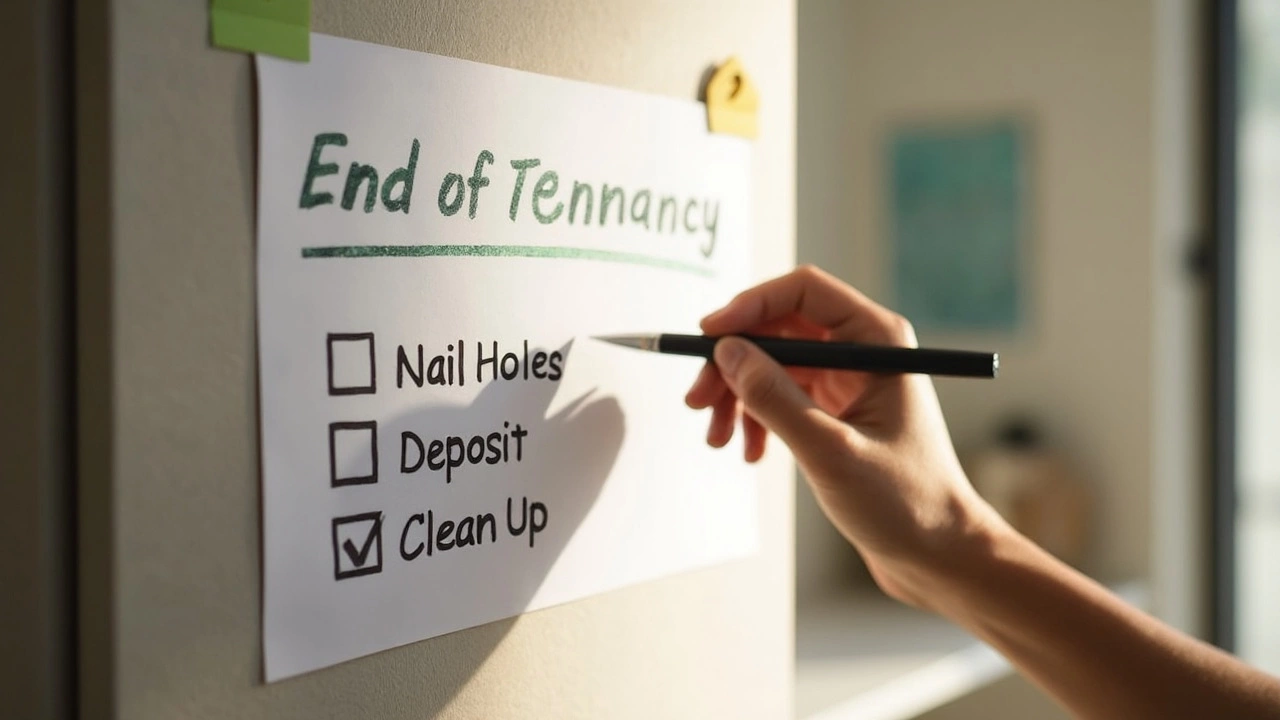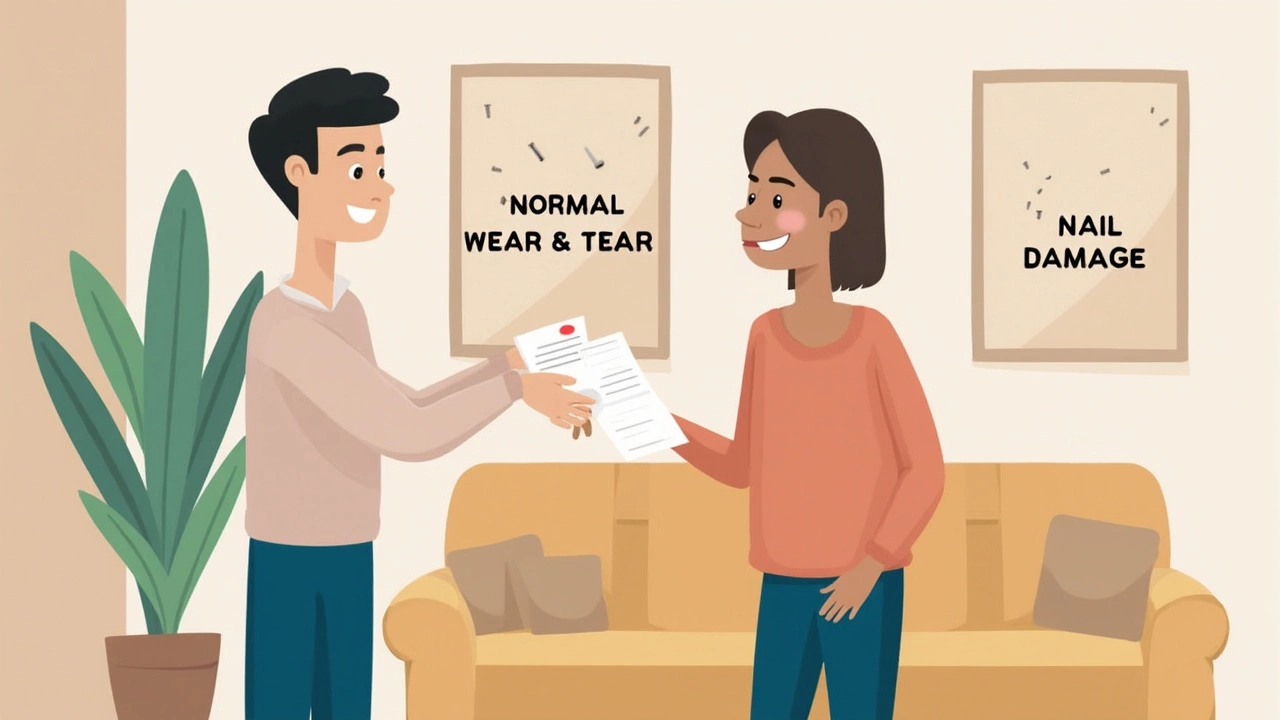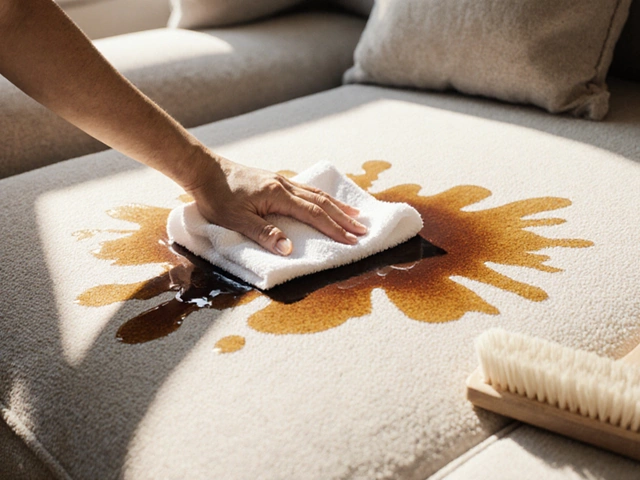Even the cleanest renter hangs up a few pictures. When you’re packing and staring at those tiny holes left behind in the walls, you start to wonder—will I get dinged for this? In California, the difference between normal wear and tear and actual damage really matters, especially for your security deposit.
Landlords and tenants argue all the time about what counts as reasonable use and what doesn’t. Knowing which side nail holes fall on isn’t just some legal riddle—it’s the key to getting your full deposit back. Mess this up, and you could easily lose a chunk of cash that should’ve stayed in your pocket.
Cutting through the confusion, let’s get into what California law actually says about nail holes and how you can protect yourself at move-out.
- What Counts as Normal Wear and Tear in California?
- Are Nail Holes Included or Not?
- Landlord and Tenant Rights Explained
- How to Handle Nail Holes Before Moving Out
- Avoiding Deposit Disputes: Practical Tips
What Counts as Normal Wear and Tear in California?
So, what does "normal wear and tear" even mean in California? The basics come straight from state law: it’s the type of gradual damage or minor aging you’d expect just from living in a place. Think scuffed floors where people walk, faded paint from sunlight, or tiny nail holes from hanging family photos. This stuff happens even in careful, clean homes, and landlords can’t use your security deposit to fix it.
According to California Civil Code Section 1950.5, landlords can only take money out for cleaning or repairs if there’s damage that goes beyond normal wear and tear. But the law isn’t super specific, so everyone kind of debates where the line is. Luckily, there are some clear guidelines most folks (and courts) use to help figure it out:
- Minor marks or tiny dings are usually okay—they count as wear and tear.
- Big holes, major stains, or stuff that makes an apartment less livable is usually called damage.
- Small nail holes from hanging pictures are often seen as normal. But lots of big holes or wall anchors? That’s another story.
You’ll want to know what California courts and property managers actually look for. Check out this quick table to see examples:
| Type of Change | Normal Wear and Tear | Damage |
|---|---|---|
| Small nail holes | Yes | No |
| Large wall holes | No | Yes |
| Faded paint | Yes | No |
| Paint peeling from water leak | No | Yes |
| Slight carpet wear | Yes | No |
| Pet stains on carpet | No | Yes |
Want to keep things smooth at move-out? Ask your landlord what their standards are when you move in, and take pictures of the walls before you hang anything. California’s rules are there to give renters a fair shot, but clear, simple communication always helps when there’s any confusion.
Are Nail Holes Included or Not?
This is the big question everyone wants answered: are those tiny nail holes normal wear and tear, or are they damage? Here’s the straight answer according to California’s rental laws and what usually happens in the real world.
In California, normal wear and tear covers stuff that happens just from everyday living. That can mean small scuffs on the wall, faded paint, or, yes—typical nail holes from hanging up photos or calendars. The California Department of Consumer Affairs actually calls out nail holes as a textbook example of normal wear and tear across most leases, especially when they’re for modest decorations and not from heavy-duty mounts or dozens of big drywall anchors.
Here’s where things can get a little gray: if you went wild and covered a whole wall with holes or used big screws and left huge gaps, it stops being "normal." The number, size, and type of holes matters. If you only made a few small nail holes per room, it’s usually not considered damage. But if you left several in every wall or the paint and drywall are crumbling around them, a landlord might call it excessive and take from your deposit.
Check out this quick comparison table based on California guidelines and real deposit disputes:
| Type of Wall Change | Normal Wear and Tear? | Could Affect Deposit? |
|---|---|---|
| 1-3 Small Nail Holes Per Wall | Yes | No |
| Multiple Large Holes or Anchors | No | Yes |
| Wall Damage from Removing Mounts | No | Yes |
| Old, Faded Paint | Yes | No |
| Patching and Painting Unmatched Spots | No | Sometimes |
A tip: always ask what your lease says. Some landlords add stricter rules, but California courts often side with tenants for minor nail holes. So, unless your wall looks like a pincushion or you left behind serious repairs, you’re usually safe. Still, double-check your move-in checklist—if there were already holes when you moved in, remind your landlord so you don’t get blamed later.
Bottom line? Nail holes from a normal amount of decorating are generally fine and usually won’t cost you, but anything bigger or lots of holes can quickly push things into damage territory.

Landlord and Tenant Rights Explained
Security deposits are one of the biggest headaches for both sides when moving out. In California, the law is pretty clear—landlords can only use your deposit for damage that goes beyond normal wear and tear, cleaning that's not just routine, or unpaid rent. Basically, if those nail holes come from hanging up standard-sized pictures, most judges and housing authorities agree that's to be expected. It's all about what a reasonable person would think is just everyday living.
The California Civil Code section 1950.5 spells out what landlords can (and can't) do with your deposit. They can't charge you for fixing up simple nail holes from a few photos or small decorations, unless you went overboard—like hammering in anchors for heavy shelves all over the place or leaving giant holes behind. But they can deduct if you left gaping holes, torn drywall, or damage that needs real repairs.
For tenants, here’s what you need to know about your rights:
- If the landlord is planning to deduct for repairs, they legally have to provide an itemized statement with receipts or estimates showing exactly what was fixed.
- You have the right to a "pre-move-out inspection" at least two weeks before the end of your lease. You can ask the landlord what might be deducted so you can handle minor issues yourself.
- Landlords have to return your security deposit (or explain any deductions) within 21 days of you moving out. Delay is not allowed—it's written in the law.
Now, if there’s a disagreement, small claims court is usually the next step. The judge will look at two things: the condition of the place when you moved in versus when you left. That's why move-in inspection lists and dated photos can make or break your case.
| Security Deposit Use | Allowed? |
|---|---|
| Routine nail holes from hanging pictures | No |
| Large holes or wall anchors for heavy objects | Yes |
| Touch-up paint for normal holes | No |
| Full repainting due to excessive holes/damage | Yes |
| Unpaid rent or cleaning that goes beyond normal | Yes |
If you want to avoid a fight, keep good records. Always do a walk-through with your landlord at both move-in and move-out. Fill out that checklist and back it up with time-stamped photos. This simple habit is your best protection if things get messy.
How to Handle Nail Holes Before Moving Out
If you’re gearing up for move-out day in California, it pays to handle nail holes the right way. Most landlords expect to see a few tiny wall scars—after all, hanging up a photo or two is what makes a place feel like home. But when does it go from normal to a security deposit headache? Here's what works in your favor.
For standard-sized nail holes (think those left by picture hooks, not anchors for heavy shelves), California law is actually on the tenant’s side. The nail holes themselves are usually considered "normal wear and tear"—as long as you didn’t go wild with wall art or leave gaping holes all over. Still, some landlords can get picky, especially if their lease tries to set stricter rules. So don’t leave it to chance.
- Patch Small Holes: All you need is some lightweight spackle or ready-mix wall filler. Squeeze a bit into each hole, smooth it with your finger or a putty knife, and let it dry.
- Sand It Down: Once the patch dries, use fine sandpaper to make it flush with the wall. Don’t overdo it, or you’ll scuff the paint.
- Touch Up Paint: If you’ve got the original paint, dab it on with a brush or sponge. For a quick fix, you can usually grab a sample size at any hardware store (bring a chip for matching!).
- Document Everything: Snap some clear photos on your phone after patching and before you hand over the keys. If a dispute crops up, you’ve got proof you left the place in solid shape.
Not sure if your holes are a "normal amount"? In California, there’s no strict number limit written in law, but if you’ve got more than a few per wall or anything over an eighth of an inch wide, it’s smart to patch those up. Here’s a quick look at how often landlords dispute deducting from deposits over wall issues:
| Issue | Percent of California Tenants Reporting Deposit Deductions* |
|---|---|
| Poor patching/visible nail holes | 52% |
| Unpatched major holes | 27% |
| General painting | 39% |
*Source: California Tenants' Rights Survey, 2024
If your lease says you can't put any holes in the wall, that rule needs to be clear. Most landlords can’t get away with charging you for regular use, but a few thumbtacks in each room usually won’t cause drama. Patch as needed, paint over your fixes, and take those photos—it’s a simple move that saves major stress later.

Avoiding Deposit Disputes: Practical Tips
If you want your security deposit back, you really have to handle those nail holes the smart way. First off, take clear pics of every wall—before you ever hang a single thing. Most people skip this step and end up with their word against the landlord’s. California Civil Code Section 1950.5 backs you up, but you’ve got to have proof.
Before you move out, fill nail holes with basic spackle (you can get it at any hardware store for a few bucks) and sand it smooth. Don’t just stick toothpaste or cheap putty in there—it usually looks messy and stands out even more. If you can, touch up with the original paint. Don’t go wild and repaint whole walls unless your landlord asks. In a 2023 survey by RentCafe, about 29% of renters lost some of their deposit due to small wall damage that could have been patched in minutes.
Keep all your move-in and move-out inspection forms. That’s your backup if anything gets heated. If you can, get your landlord to do a walkthrough with you. California law actually says you’re allowed an inspection before moving out, and they’re supposed to give you a list of fixes that could cost your deposit—so use it.
- Document everything (pics or video = deposit insurance)
- Patch up nail holes the right way—no shortcuts
- Use the pre-move-out inspection to your advantage
- Return all keys and leave a forwarding address
| Action | Impact on Deposit |
|---|---|
| Leave minor nail holes | Often considered normal wear and tear |
| Patch and touch up holes | Rarely deducted from deposit |
| Leave lots of large holes or damage | Likely deposit deduction |
If things go sideways, send all your proof in writing—photos, inspection lists, communication. Most California deposit disputes that go to court swing in favor of whoever has the best documentation. Staying organized isn’t a pain—it’s literally money in your pocket.





